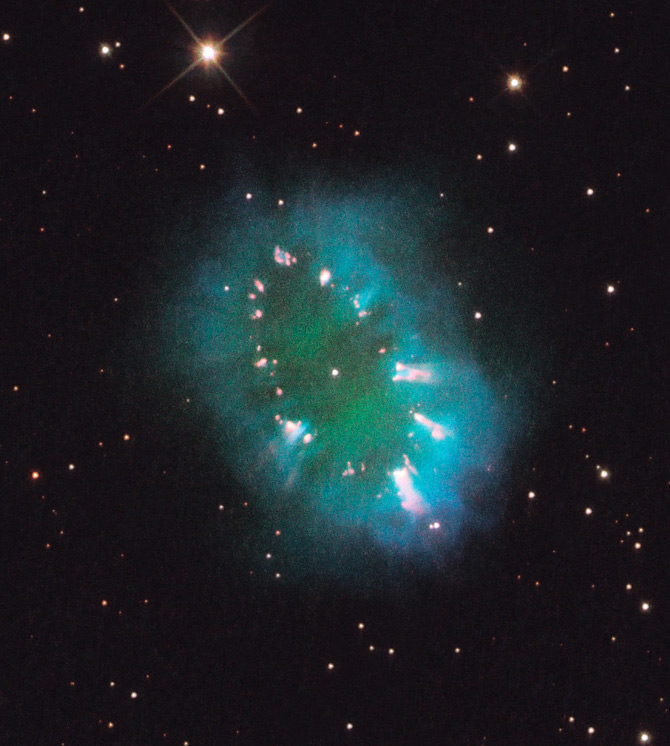[/caption]
Awww, how nice of the Hubble Space Telescope, providing us all with a little cosmic bling in this great new view of the Necklace Nebula! From the image, it’s quite obvious why this object carries the name it does (and who wants to call it by its technical name PN G054.2-03.4, anyway?). The Necklace Nebula is a recently discovered planetary nebula, the glowing remains of an ordinary, Sun-like star. You’d need to have a fairly large neck to wear this necklace, as the nebula consists of a bright ring measuring 12 trillion miles wide, dotted with dense, bright knots of gas that resemble diamonds in a necklace.
How did this unique nebula originate? A long time ago, (about 10,000 years) in an aging binary star system far away (15,000 light-years from Earth) one of the old stars ballooned to the point where it engulfed its companion star. The smaller star continued orbiting inside its larger companion, increasing the giant’s rotation rate.
The bloated companion star spun so fast that a large part of its gaseous envelope expanded into space. Due to centrifugal force, most of the gas escaped along the star’s equator, producing a ring. The embedded bright knots are dense gas clumps in the ring.
The pair is so close, only a few million miles apart, they appear as one bright dot in the center. The stars are furiously whirling around each other, completing an orbit in a little more than a day.
The Necklace Nebula is located in the constellation Sagitta. In this composite image, taken on July 2, Hubble’s Wide Field Camera 3 captured the glow of hydrogen (blue), oxygen (green), and nitrogen (red).
Thanks Hubble for the new cosmic jewelry!
Want a larger version of this bling? See the HubbleSite for more info.

